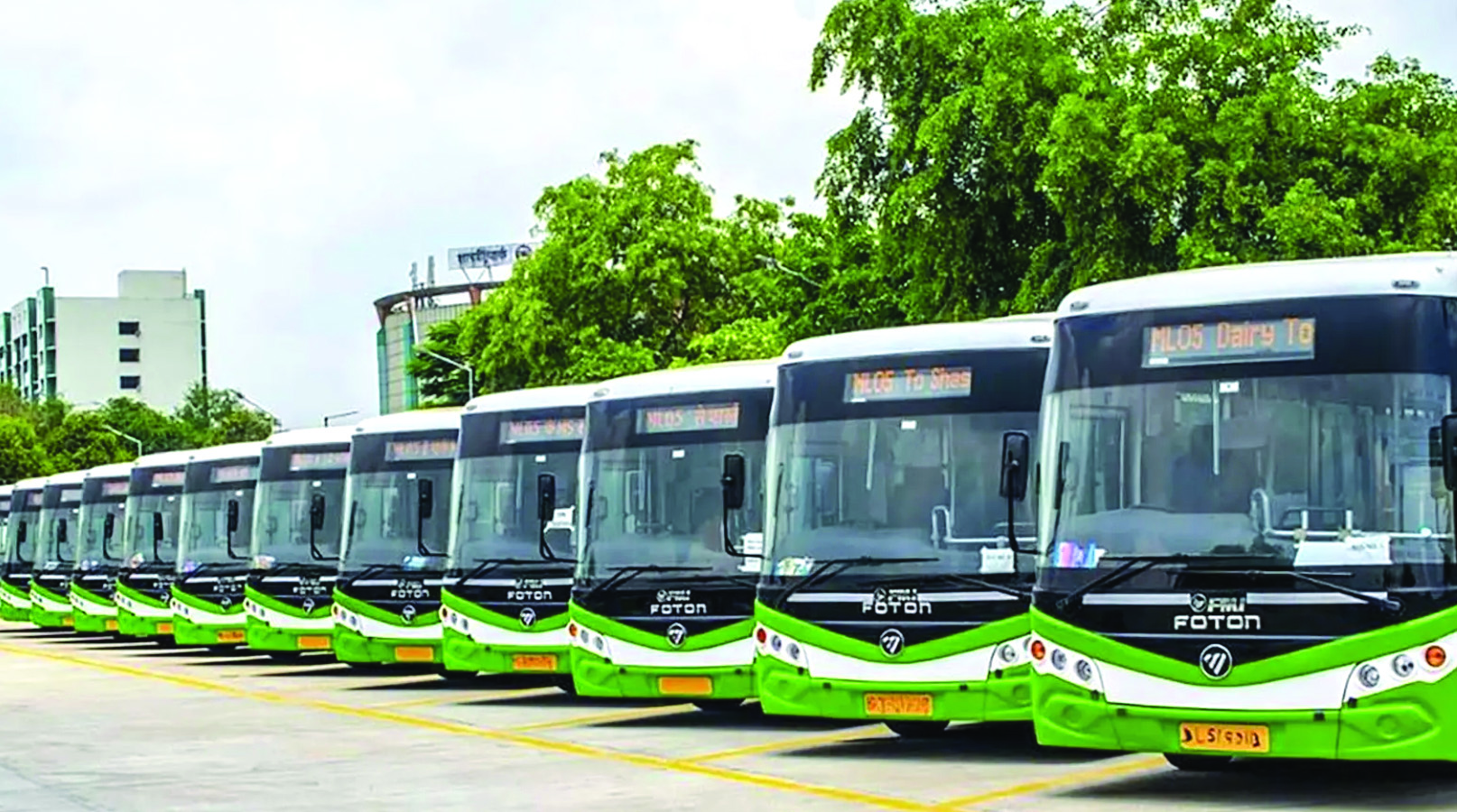Boosting India’s EV Ecosystem
Developing EV programmes as a self-reliant industrial policy is underscored in the new budget with a strong emphasis on de-risking the supply chain

Finance Minister Nirmala Sitharaman in her speech on the Union Budget 2025-26, has underscored the need for localisation of electric vehicle (EV) manufacturing and raw material security for battery production. This signals a firmer policy thrust on industrial development and employment generation around EV production in India.
This can be an opportunity to join climate and clean air action with an industrial strategy to accelerate clean energy transition in the automotive sector. The budget proposal has further connected electrification with the upscaling of mass commuting modes of electric buses to maximise the energy and emissions-saving gains.
The cornerstones of the spending priority outlined in the Union budget are as follows:
* Support and incentives for electric vehicle manufacturing with custom duty exemptions on 35 capital goods for EV battery manufacturing, and support for domestic manufacturing of motors, controllers and other critical components and integration of EV manufacturing with clean tech manufacturing programmes.
* There is a committed budget for the PM-e-drive with a sizable allocation of Rs 4,000 crore to upscale electrification of the two-wheeler and heavy-duty vehicle segments.
* PM e-Bus Sewa payment Security Mechanism for procurement and operations of e-buses by public transport authorities to upscale and sustain electric bus services during their service life to decarbonise mass commuting in cities.
* There is continued support for the Production Linked Incentive (PLI) schemes for advanced chemistry cell manufacturing.
This time, several pieces of EV ecosystems have come together relatively more cohesively to take an ecosystem approach to the localisation of the industry. The rationale for this composite basket of incentives and allocation is outlined in the new Economic Survey released the day before the Union Budget on February 1.
The Survey, while reiterating the importance of electric mobility in mitigating road transport emissions, — (i.e. nearly 75 per cent of the emissions from the transportation sector), to meet the Net Zero goals by 2070, has expressed urgency to expand local manufacturing to de-risk the EV strategy.
It has expressed deep concerns around the import intensity of E-Vehicle production — especially from countries with whom India has large trade deficits and has asked for rapid indigenisation of technology and raw material processing to fend off China’s dominance.
It has made an explicit connection between the success of the ongoing schemes including FAME India, the PLI Scheme for Auto Components and advanced chemistry cell batteries, and the Scheme for Manufacturing of Electric Passenger Cars in India among others, with the strengthening of the domestic supply chains.
If not addressed, the risk of material insecurity can be enhanced. Manufacturing of an EV in relation to an internal combustion engine car requires nearly six times more minerals to produce and this should be available for processing in India, states the Survey. It further cites the IMF to suggest that if the trade of critical minerals is disrupted, investment in EVs and renewable energy can be lower by as much as 30 per cent by 2030 compared to an unfragmented market.
If the lithium-ion batteries market in India is expected to grow at a Compound Annual Growth Rate of 23 per cent by 2030 de-risking this supply chain will be a necessity. The Ministry of Mines has identified 33 critical minerals needed for material security but found that 24 are at high risk of supply disruptions due to China’s dominance of the global supply chain.
Building capacity for localisation
If de-risking of the supply chain becomes the primary focus of the EV transition, and the budget aims to contribute to that direction, a self-reliant ecosystem will require increased investments and institutional capacity for R&D in advanced battery technologies. The Survey states that this will require more R&D capacity for Sodium-ion and Solid-State Batteries, securing intellectual property, and efforts towards battery recycling for material security.
The Centre for Science and Environment has been arguing in its studies on this aspect that an accelerated localisation strategy can be an opportunity for focused cell and battery development programmes to build competence, capability and capacity for scaling up India’s EV transition. A national battery development program can facilitate large-scale cell production and commercialisation of mature cell technologies, development of new cell chemistries, strengthening of material security through circularity, and technology development to achieve higher levels of technology readiness for commercialisation and market maturity.
However, it is also important to emphasise once again that the new budgetary initiative will also require much stronger framing of the national EV policies to include binding regulatory targets for time-bound electrification, zero emissions mandate for supply side management, and strengthening of the regulatory enablers like stringent fuel economy standards for a strong market pull. Otherwise, without a committed demand for EVs in the domestic market, the expected upscaling of localisation can remain sub-optimal.
Sufficiency measures
It is also necessary not to lose sight of the continued budgetary support for the electric bus programme in the new budget. While PM e-bus Sewa is an opportunity to upscale bus service in a larger number of cities and towns, the explicit underpinning of the importance of public transportation for viable energy transition and reducing import dependence in the Survey needs to be taken forward.
It is stated that “expanding the public transportation network is another avenue of reducing dependence on overseas supply chains that E-Mobility entails.” Such an approach “instead of private e-mobility solutions” can be more equitable to ensure the benefits of clean mobility for all and for “more resilient and equitable energy transition”. It is now wait and watch to see how localisation and EV transition will accelerate in India.
Views expressed are personal



